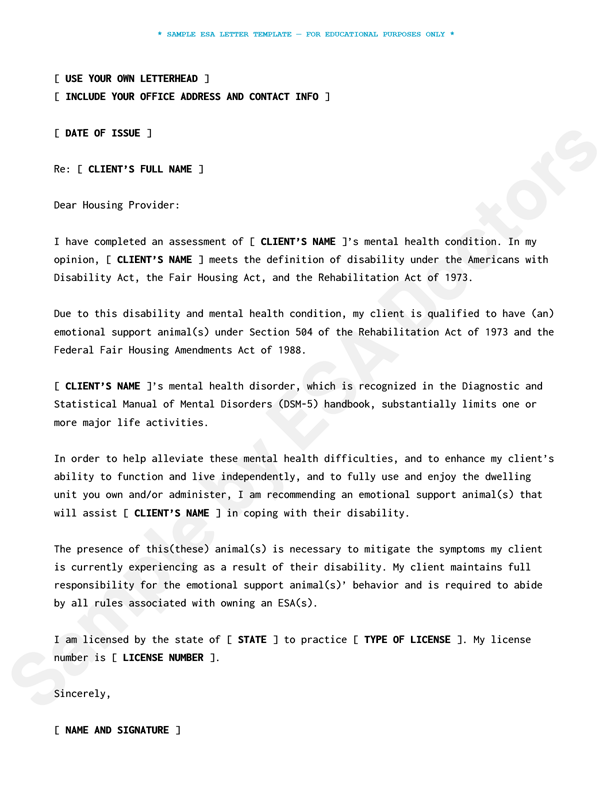Has your patient or client asked you for an emotional support animal (ESA) letter? Not sure how to write one? We have you covered in this guide with a sample template.
Emotional support animals have become integral for countless individuals grappling with mental health challenges. As the demand for ESAs continues to rise, so does the need for legitimate and properly drafted ESA letters.
If you’re a therapist or doctor tiptoeing the line between advocating for your patient’s well-being and ensuring regulatory compliance, this guide is for you.
Addressing the Elephant (or ESA Dog) in the Room
Fear #1: Will I face legal repercussions if the ESA letter I write doesn’t follow the strict guidelines?
The ESA landscape can feel like a minefield, but by reading up on HUD’s ESA guidelines, you can ensure that you are within the parameters of the law.
Fear #2: Aren’t there many fraudulent ESA requests? How do I ensure I’m not aiding a scam?
By conducting a thorough assessment, you can safeguard against potential misuse. Remember, you’re writing these letters to aid those patients who genuinely require an ESA.
Fear #3: Will this impact my professional reputation?
Only if it’s done wrong. Properly written and justified ESA letters can elevate your commitment to patient care and adherence to professional standards. An effective, well-constructed letter can solidify your reputation as a responsible and caring health professional.
Still reluctant to write an ESA letter due to lack of experience or other reasons? You’re not alone. Many healthcare professionals are not comfortable writing ESA letters and refer the task to specialists who better understand ESA requirements.
ESA Letter Template
The following is a sample ESA letter template. It should only be used as a potential starting point – ESA letters must be tailored to the patient/client and modified for the healthcare professional’s preferences.
If you’re unsure how to proceed, consider referring your patient or client to an ESA specialist instead.
Crafting an ESA Letter
If you’re writing an ESA letter for the first time, consider these essential elements:
- Letterhead and Professional Details:
Always start with your professional letterhead. The letter should include your name, license number, date of issuance, state of practice, and contact details. - Date of Issue:
An ESA letter should ideally be updated annually. - Patient’s Details:
The patient’s full name should be mentioned clearly. - Confirmation of Disability:
The letter must confirm that the patient has a mental health disability that meets Fair Housing requirements. - The Need for an ESA:
Detail how the ESA helps alleviate symptoms or effects of the individual’s disability. This should be based on your professional judgment and understanding of the patient’s condition. - ESA Specifications (if applicable):
Optionally, you can include specifics about the type of ESA or its role. This is not mandatory. However, avoid overly specific descriptions unless they are clinically relevant. - Legal References:
Cite relevant federal laws that back up the patient’s rights to an ESA, such as the Fair Housing Act. - Your Signature and Date:
Always remember to sign and date the letter.
Wrapping Up
Emotional support animals play a central role in the well-being of many individuals. By understanding their patients’ concerns, becoming knowledgeable about ESA housing rules, and creating a robust template, therapists and doctors can ensure their patients get the support they need while adhering to professional standards.






Leave a Comment